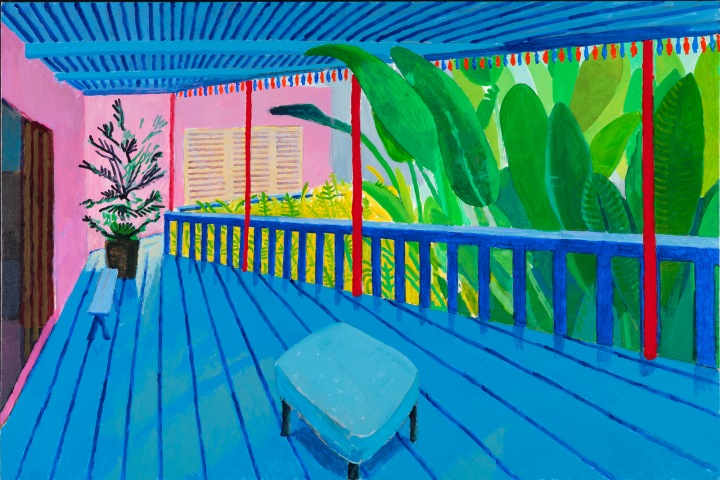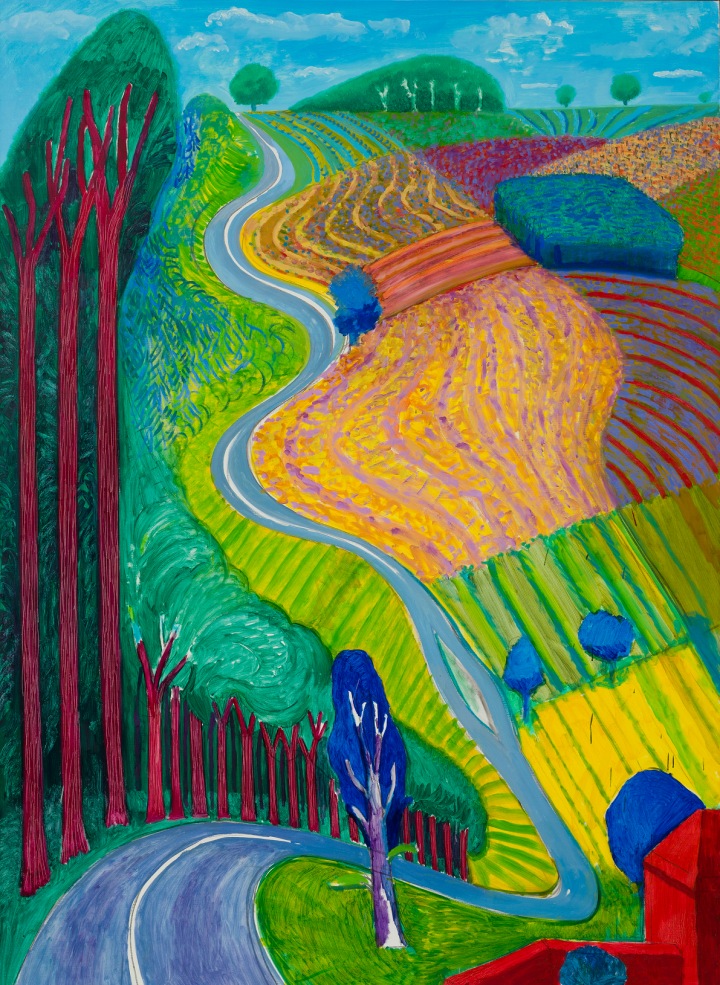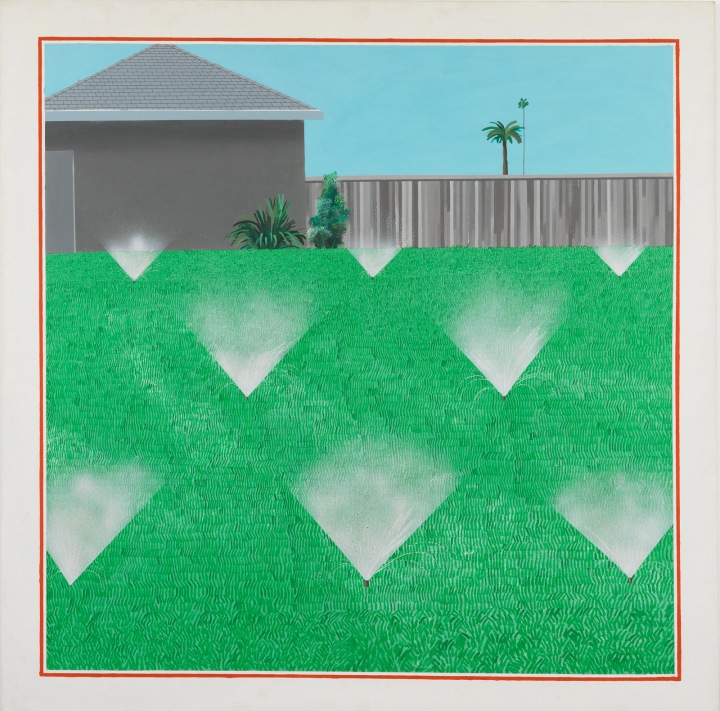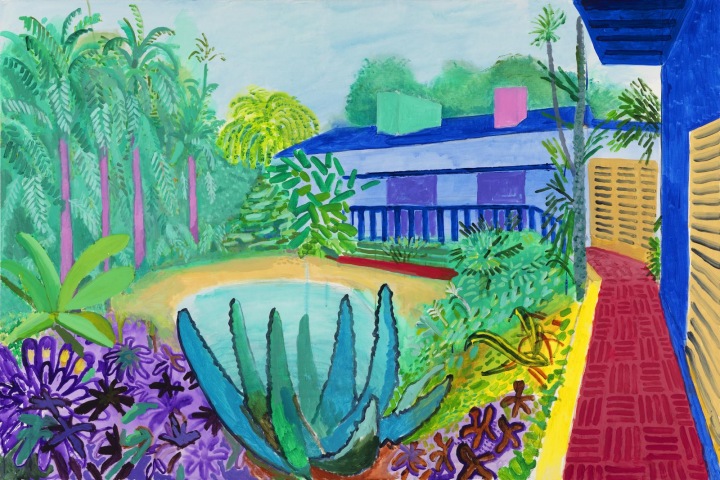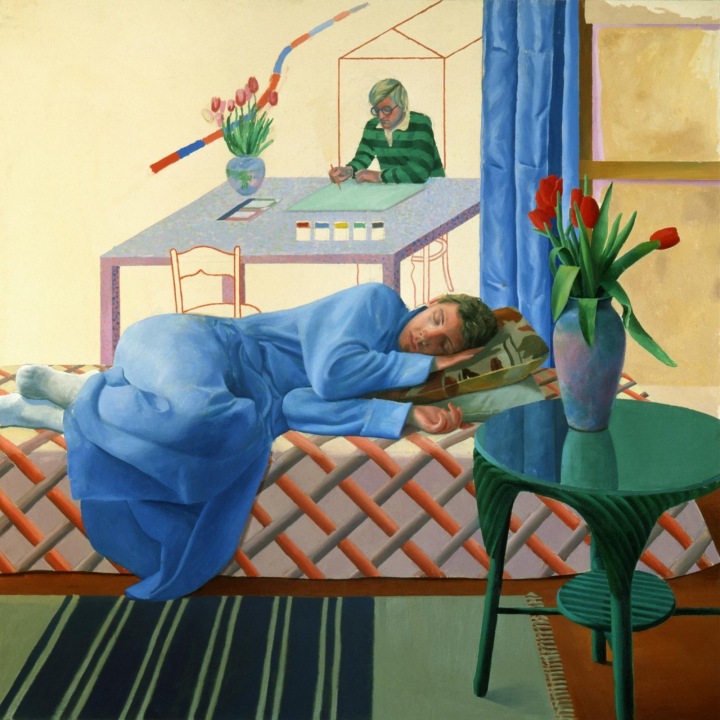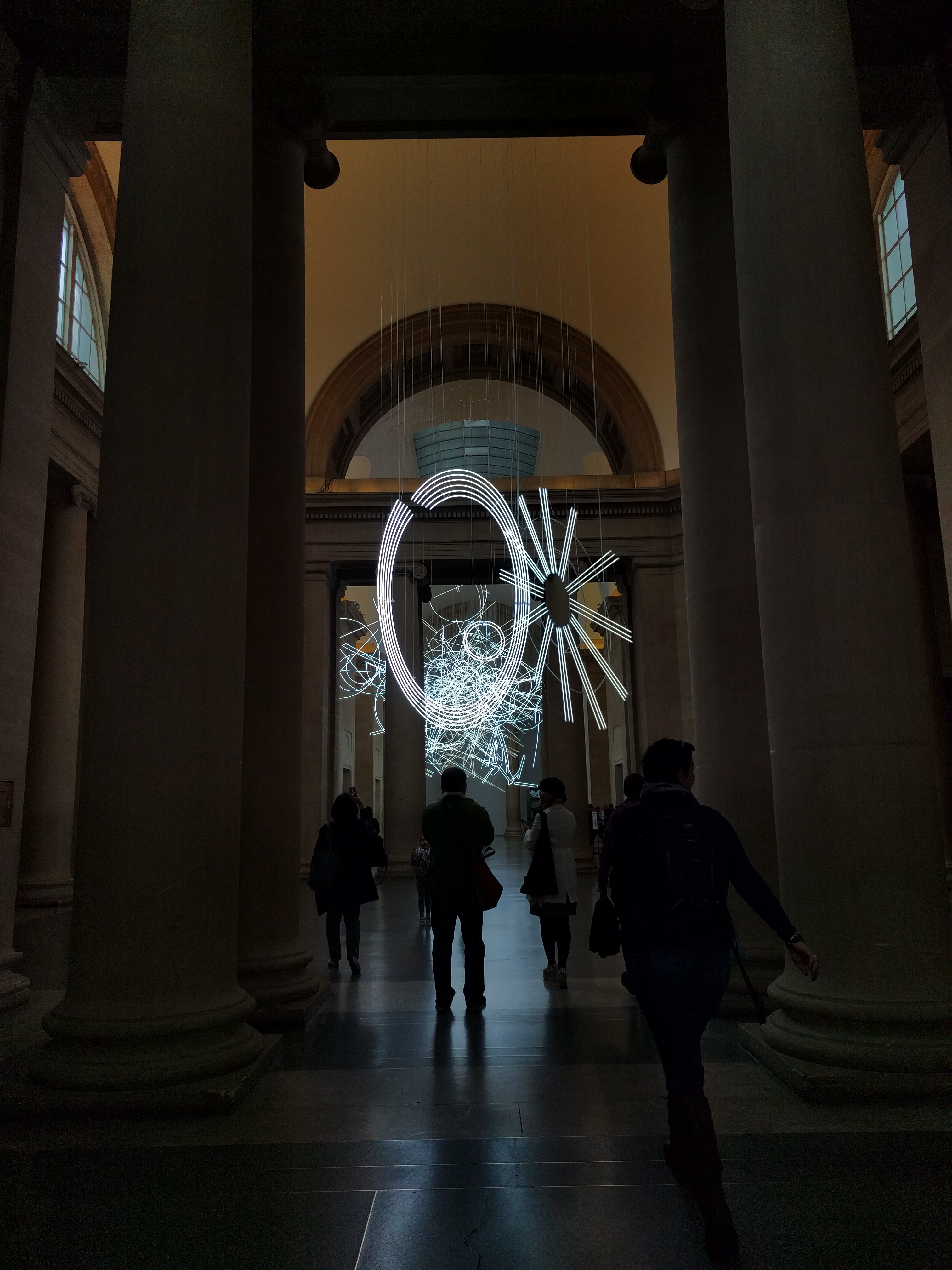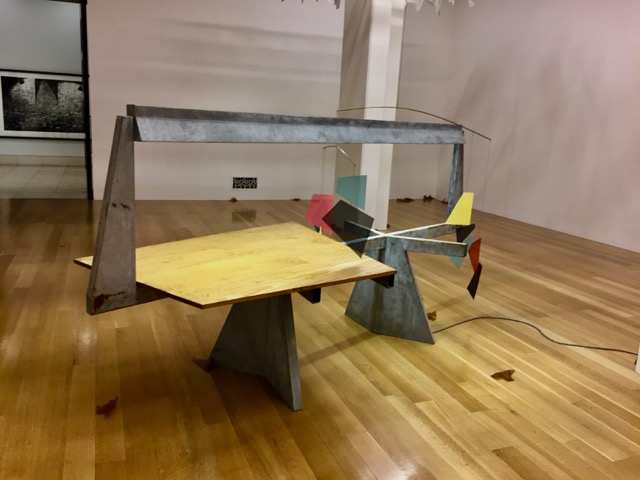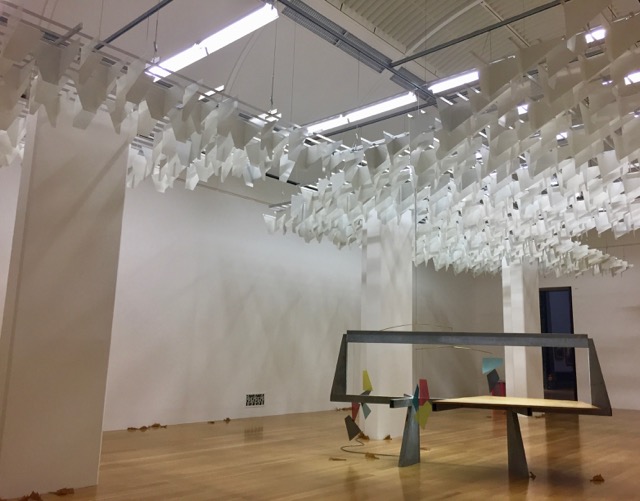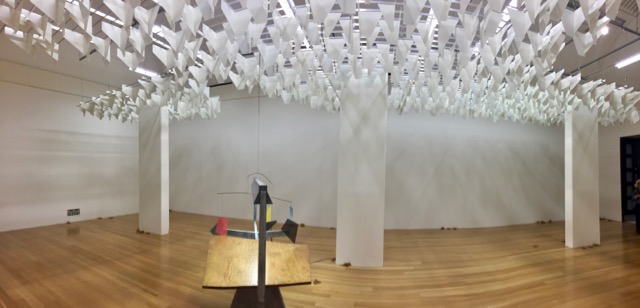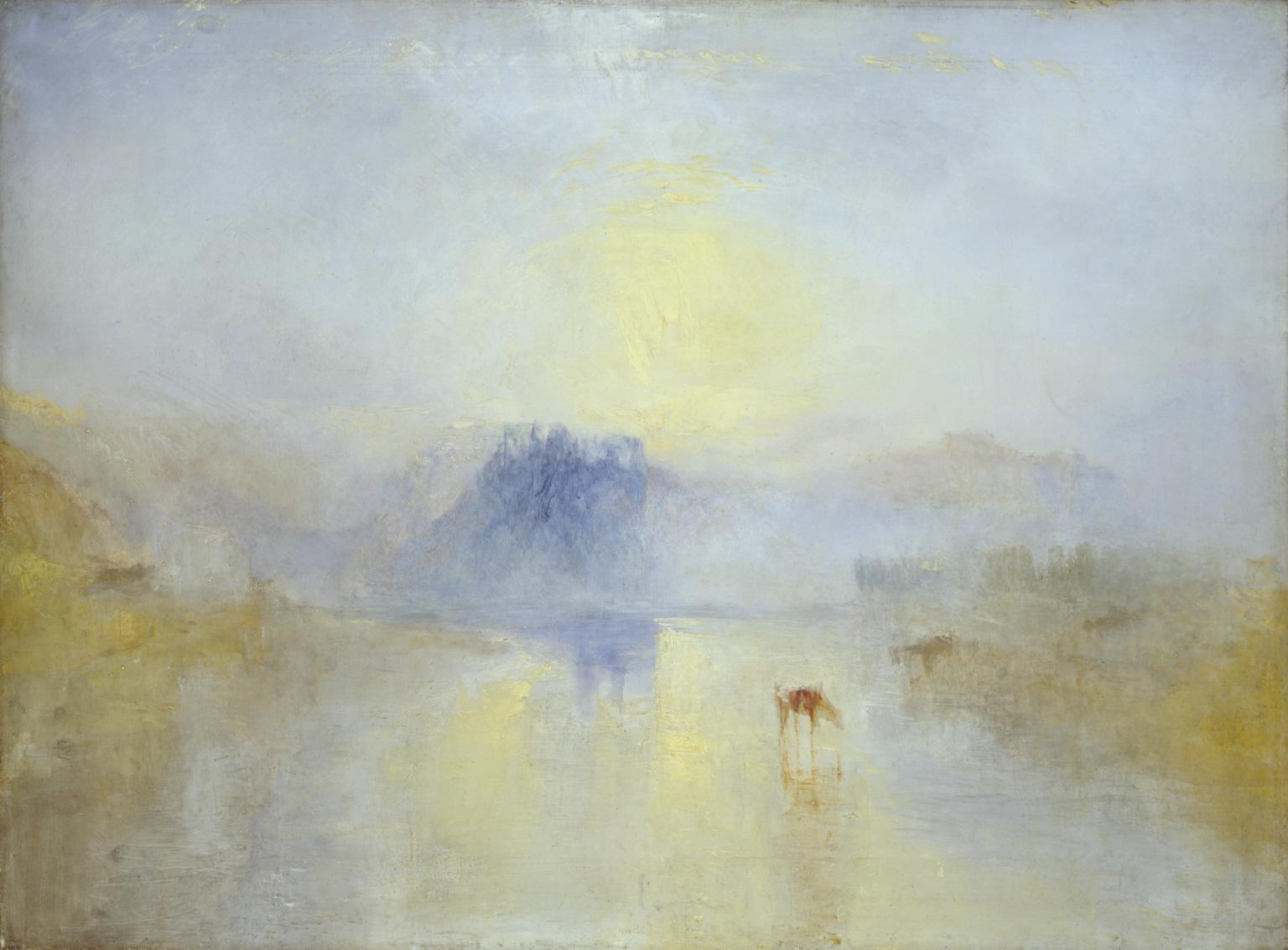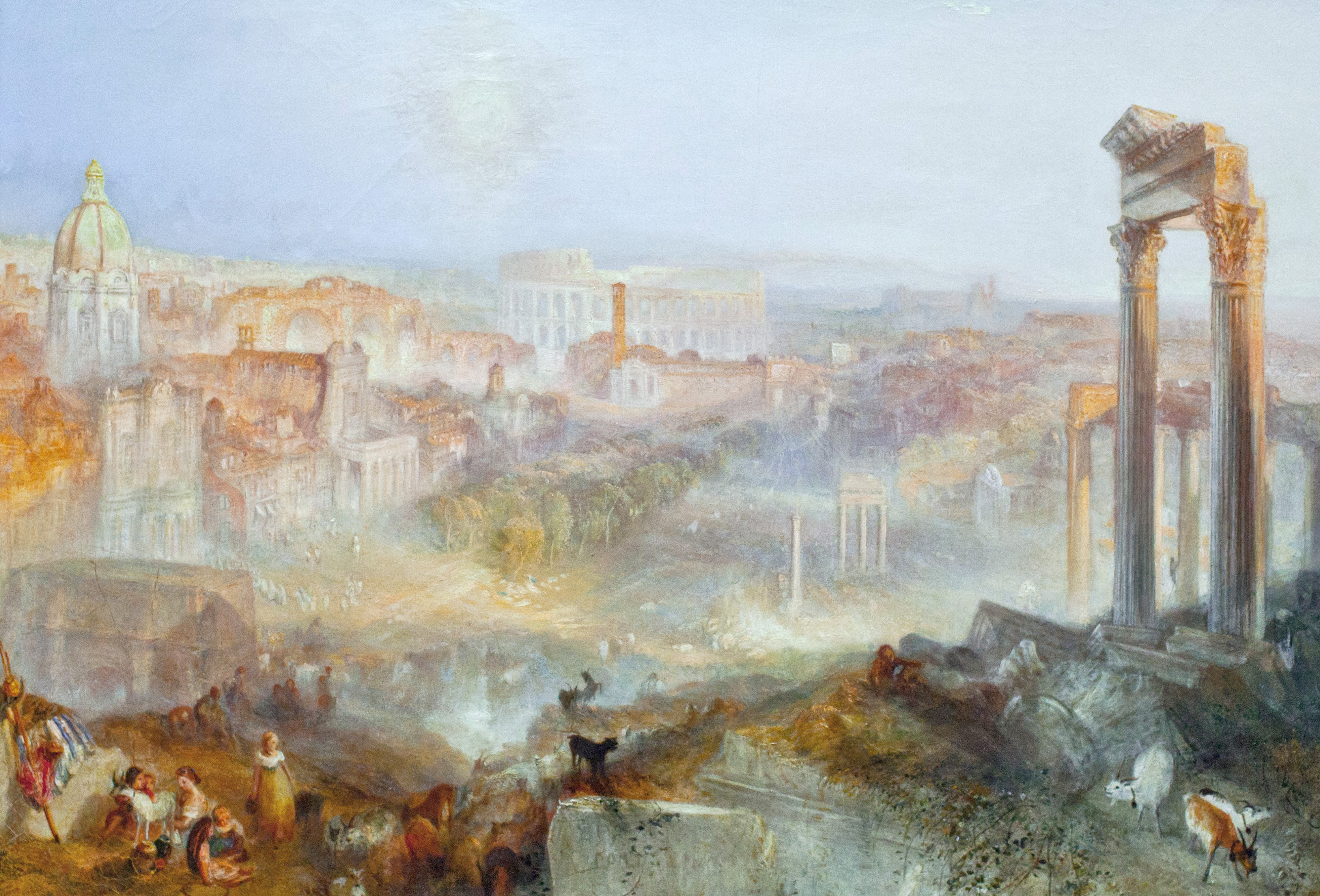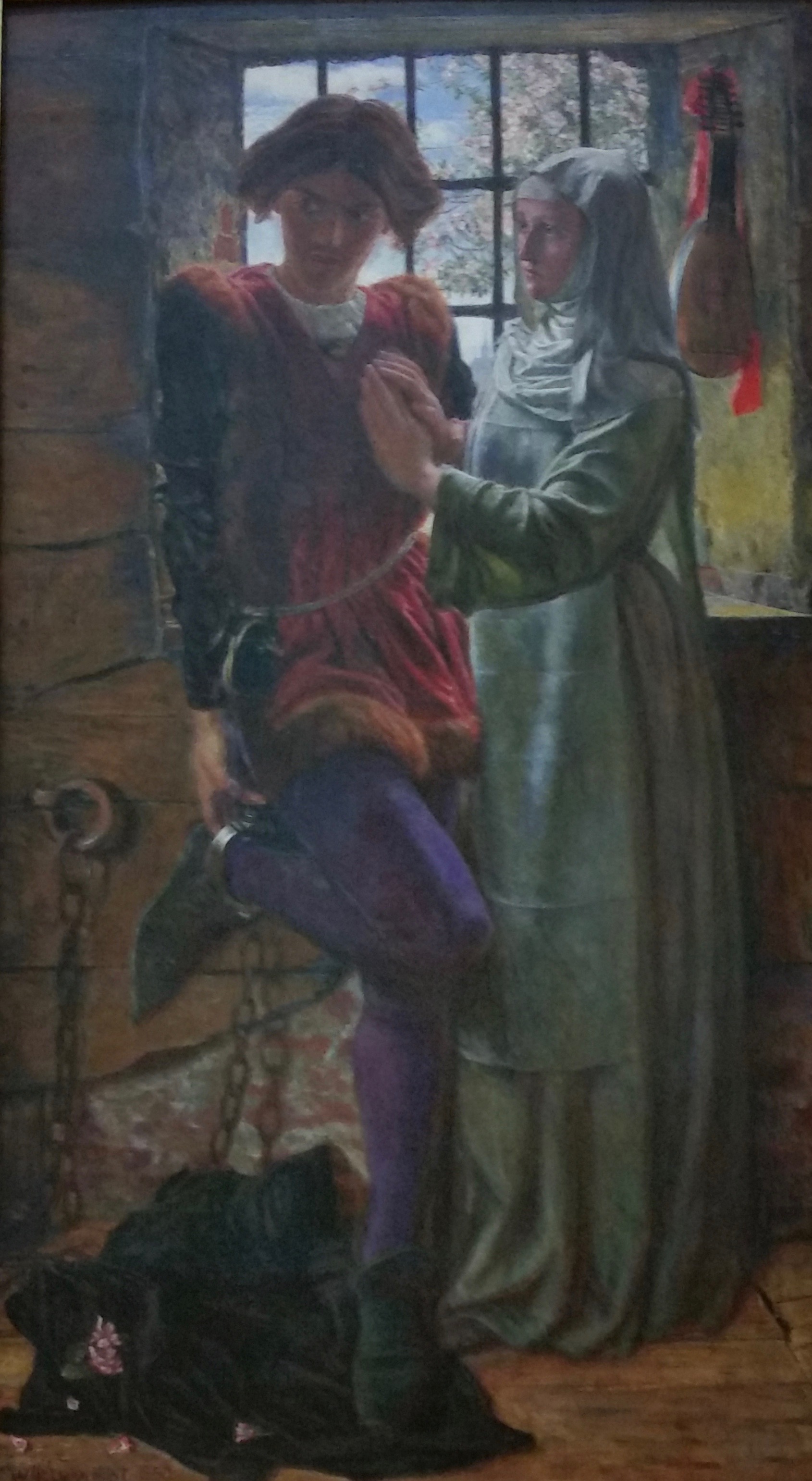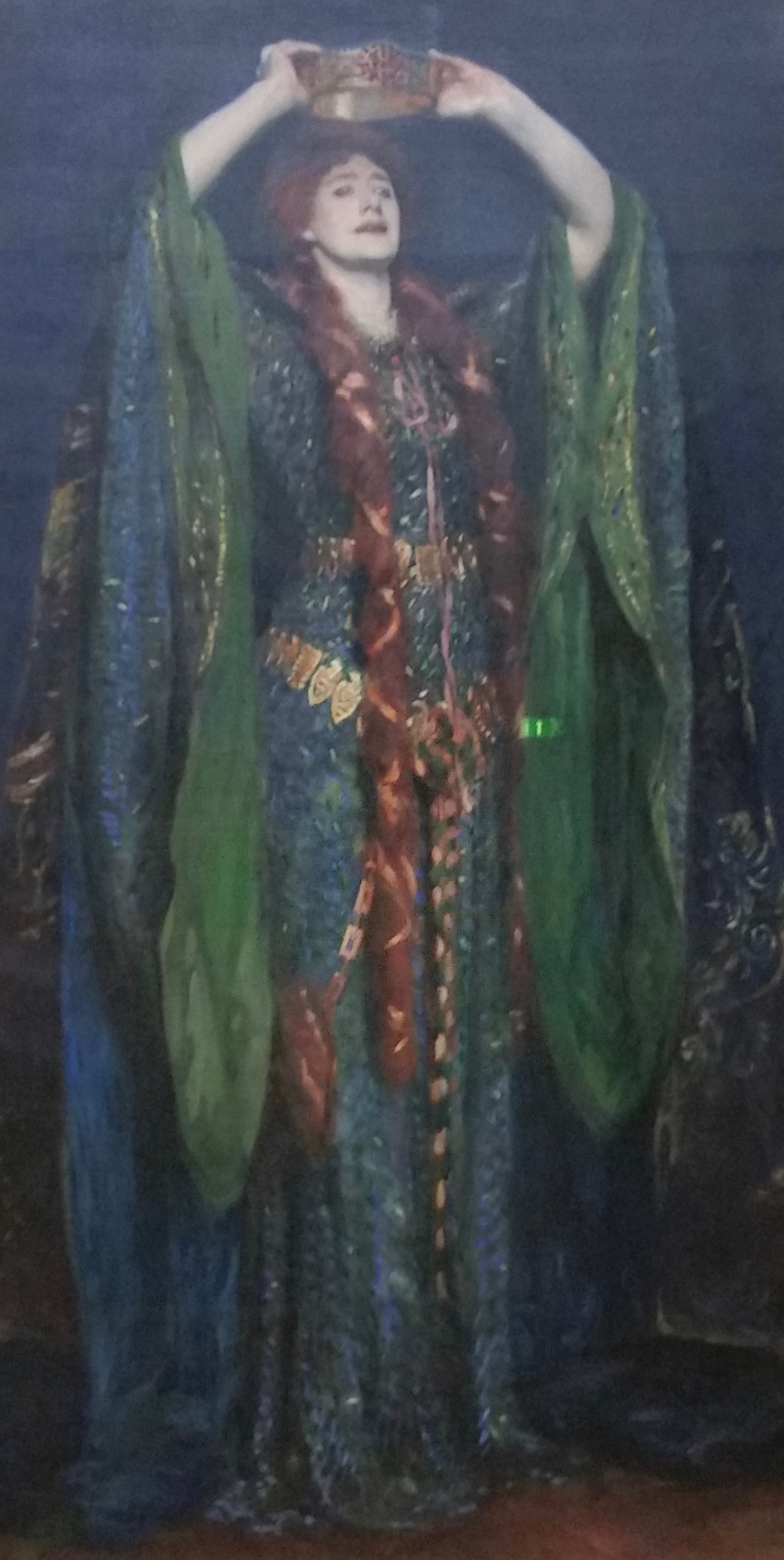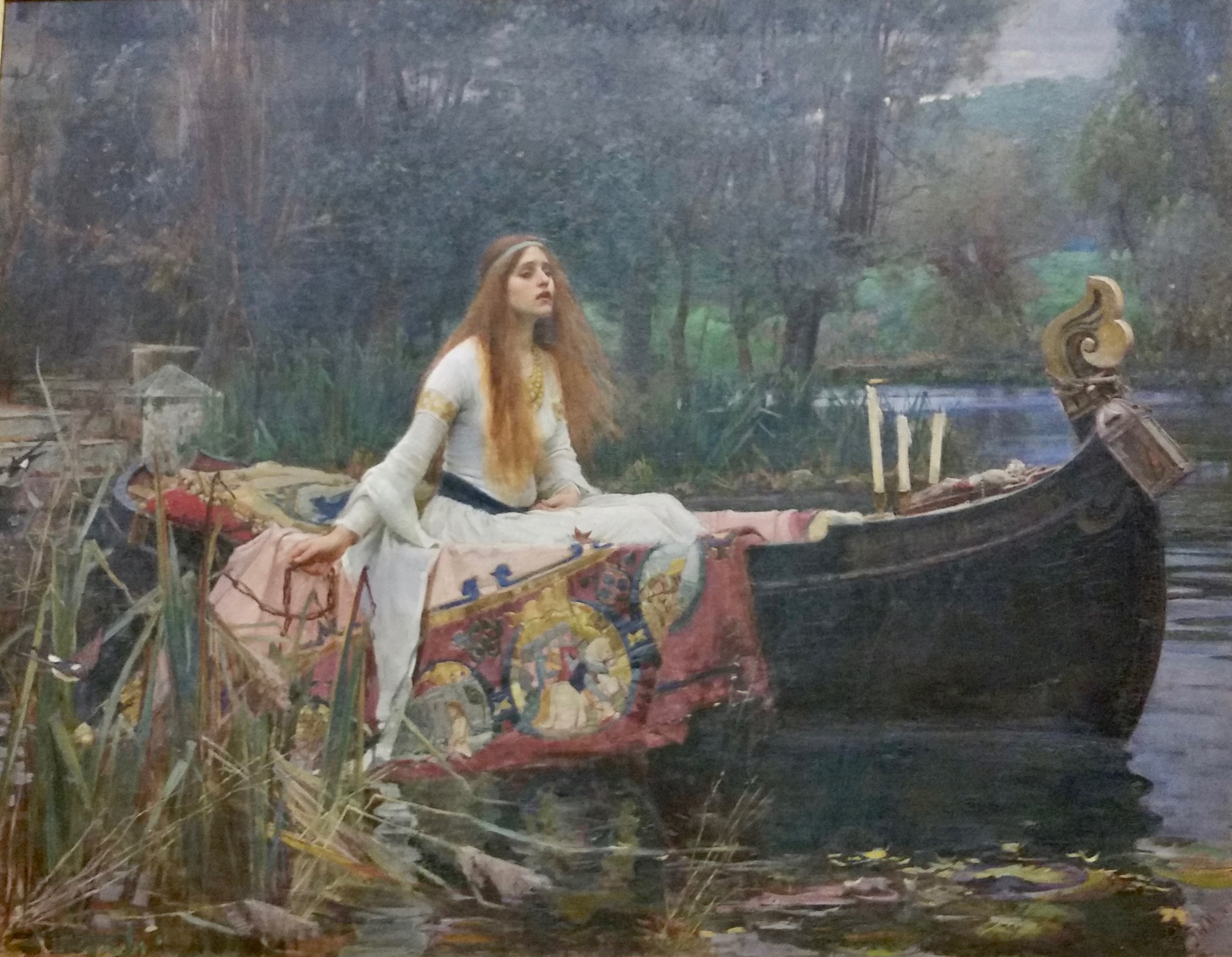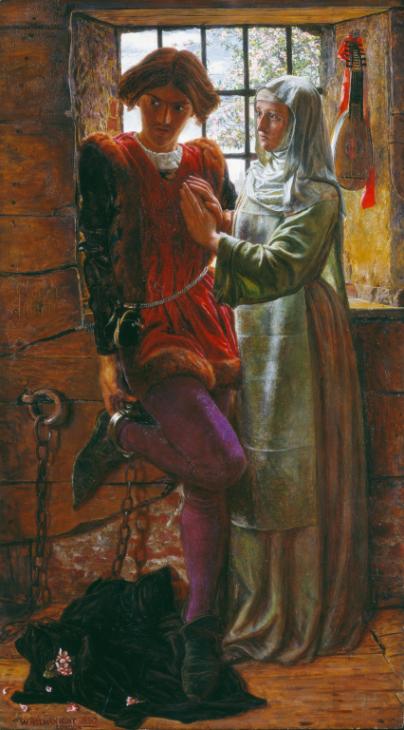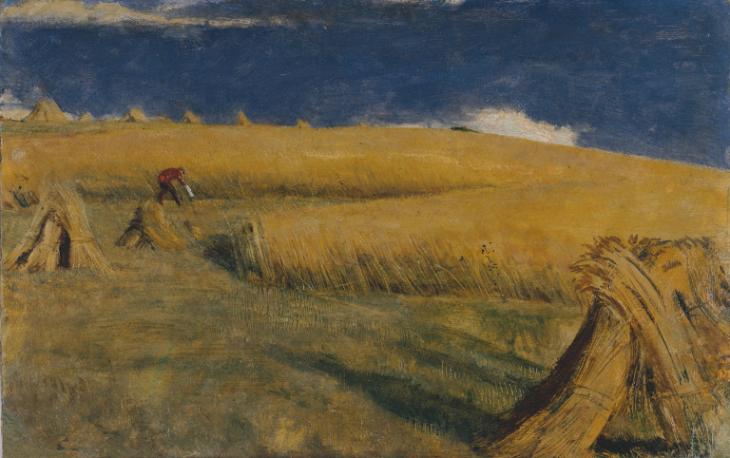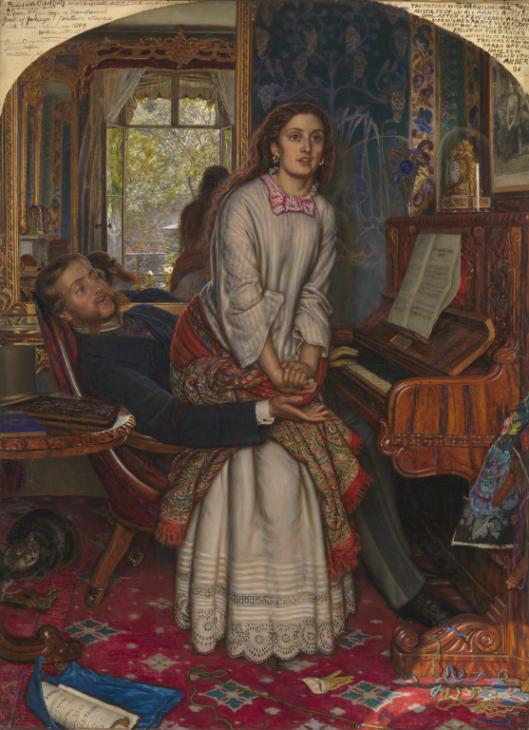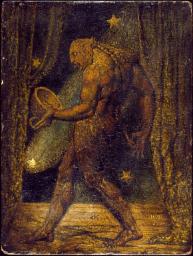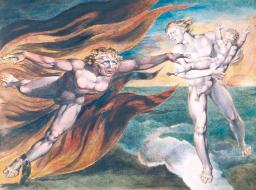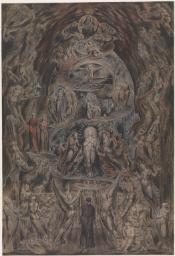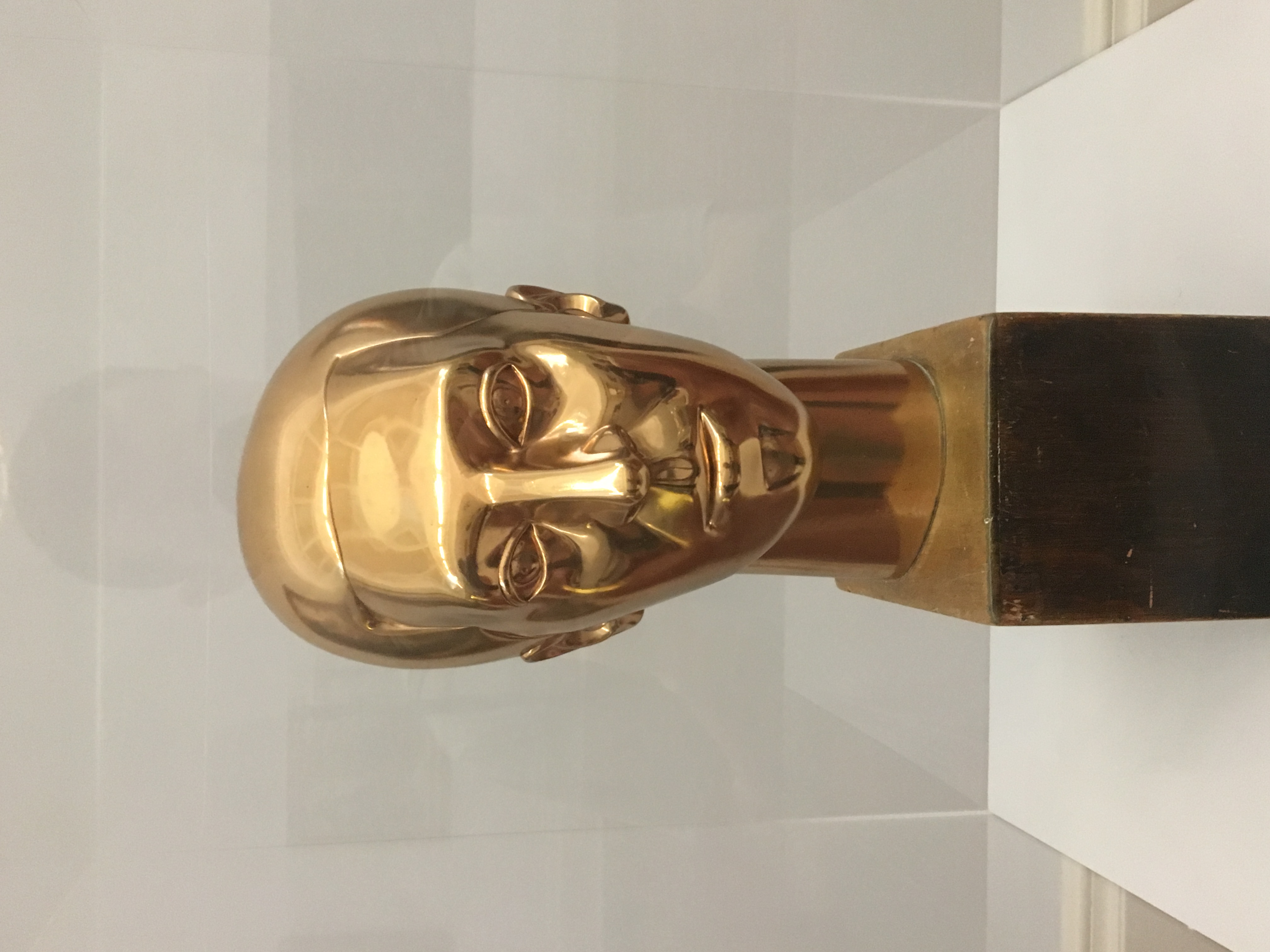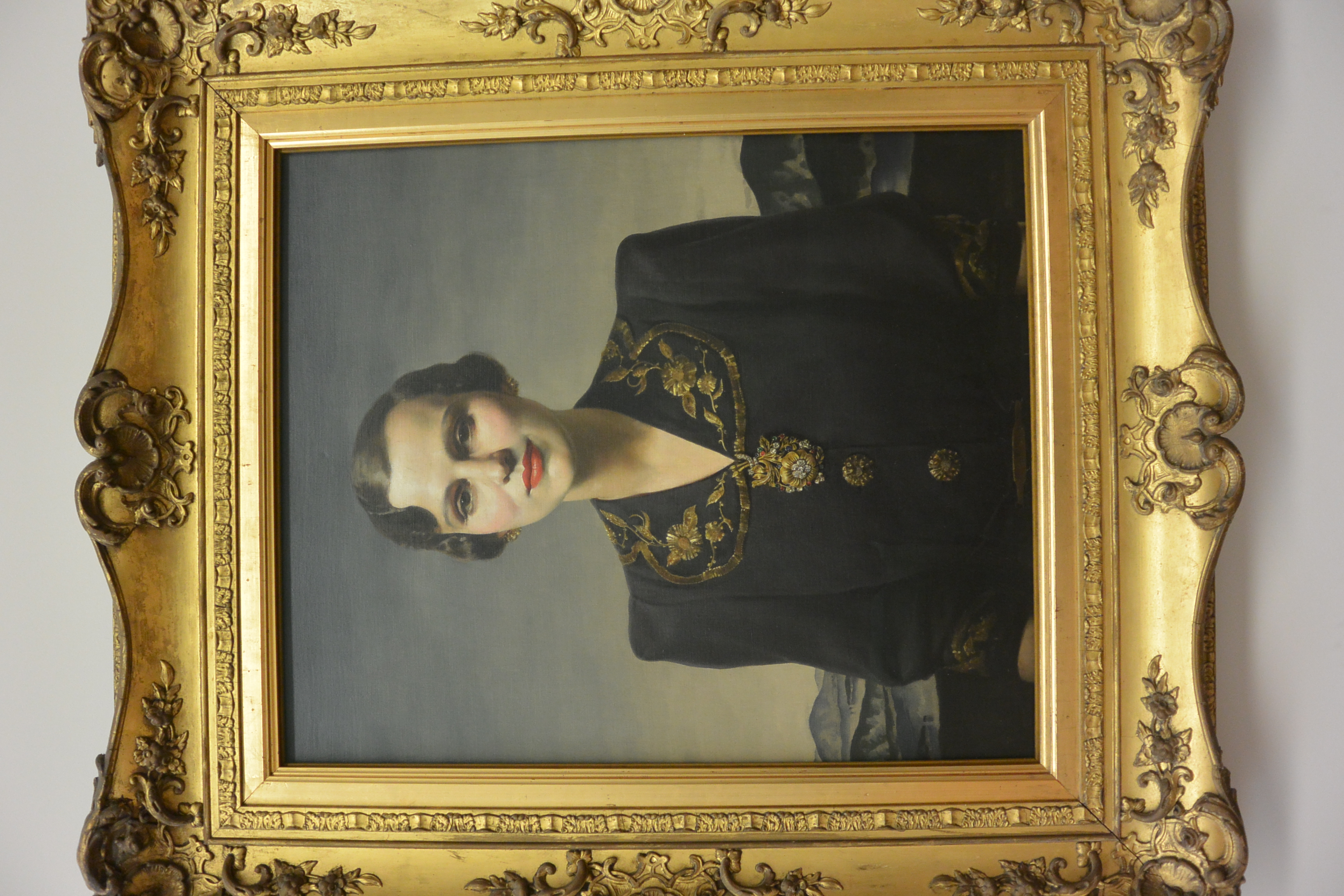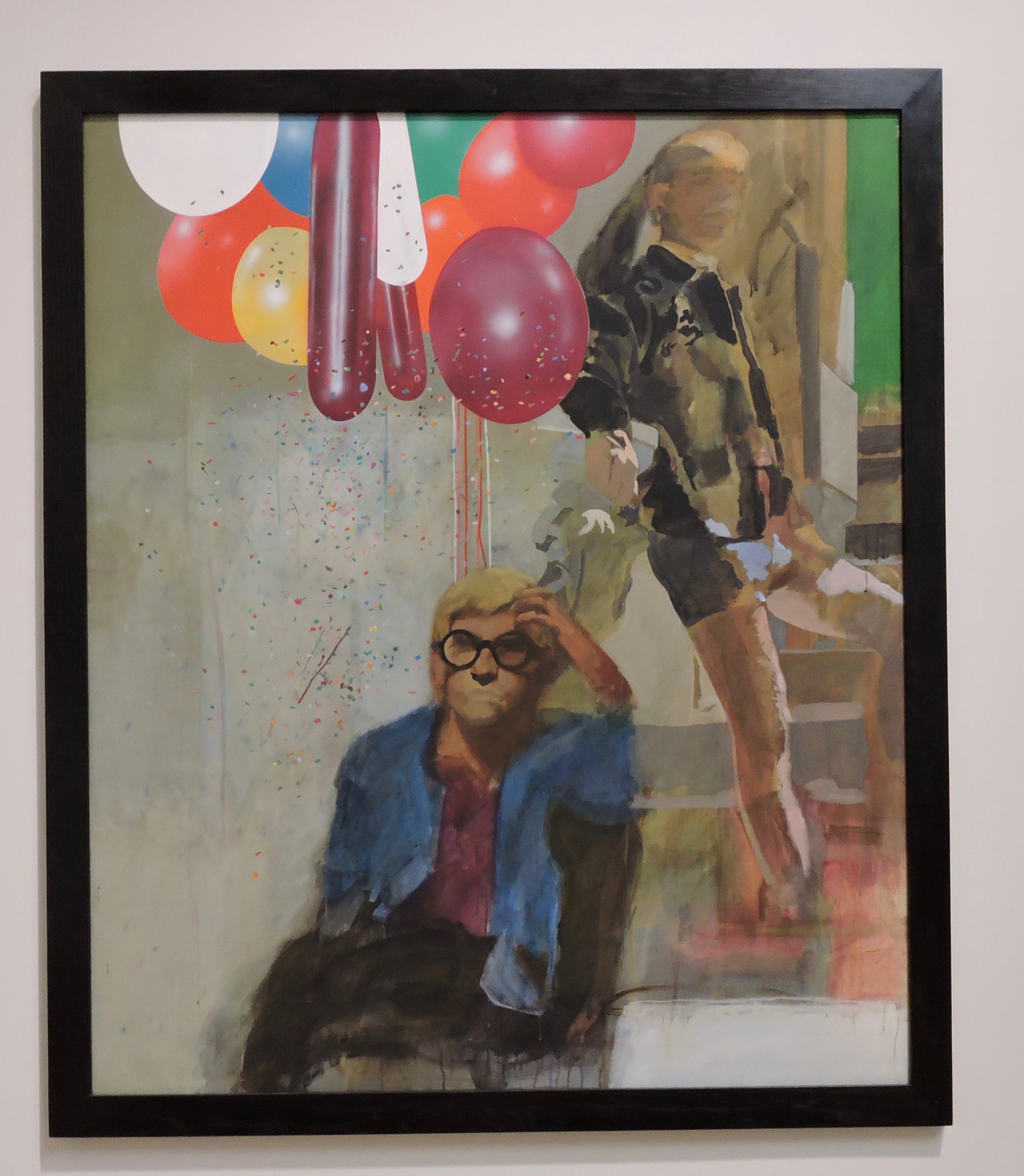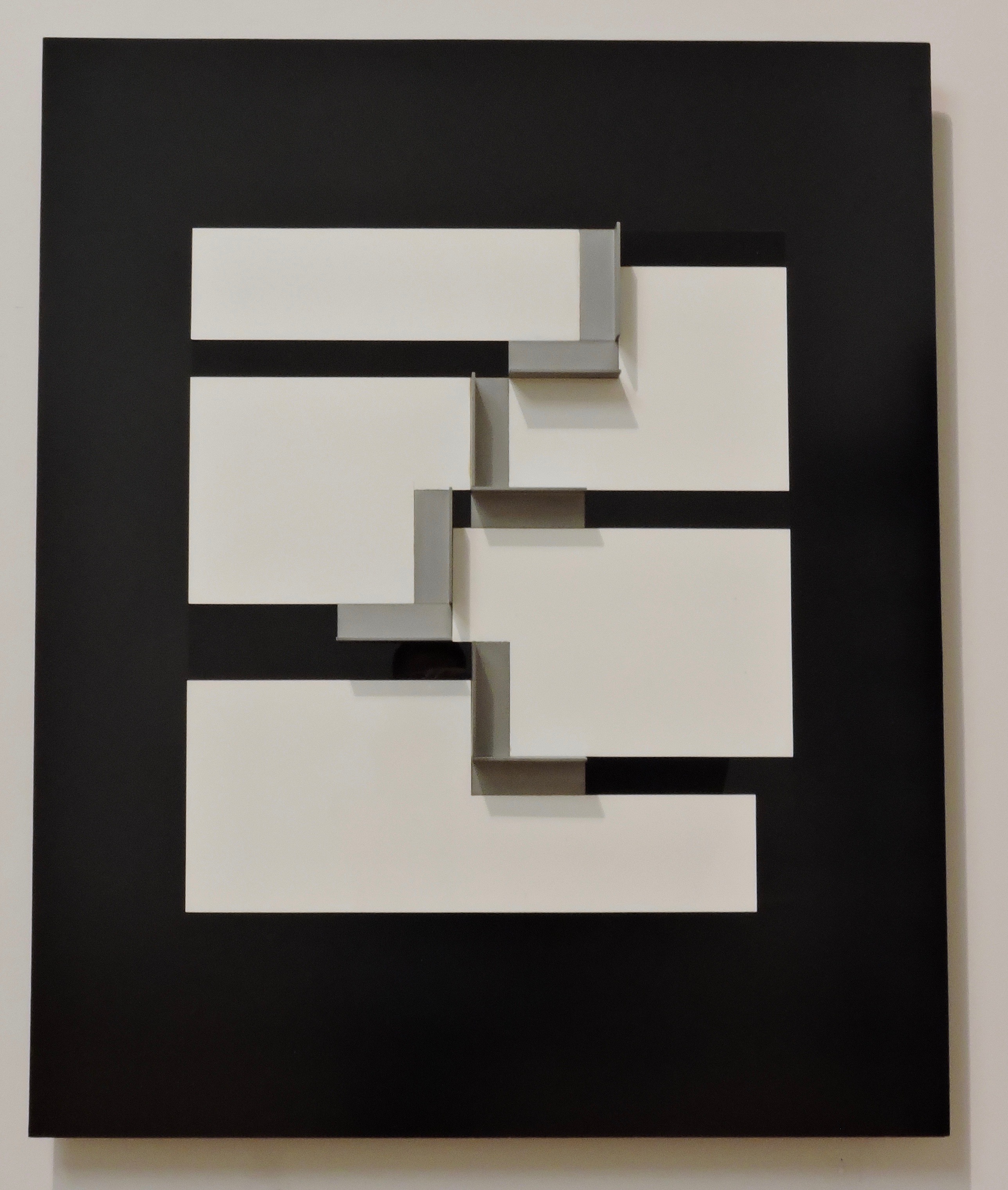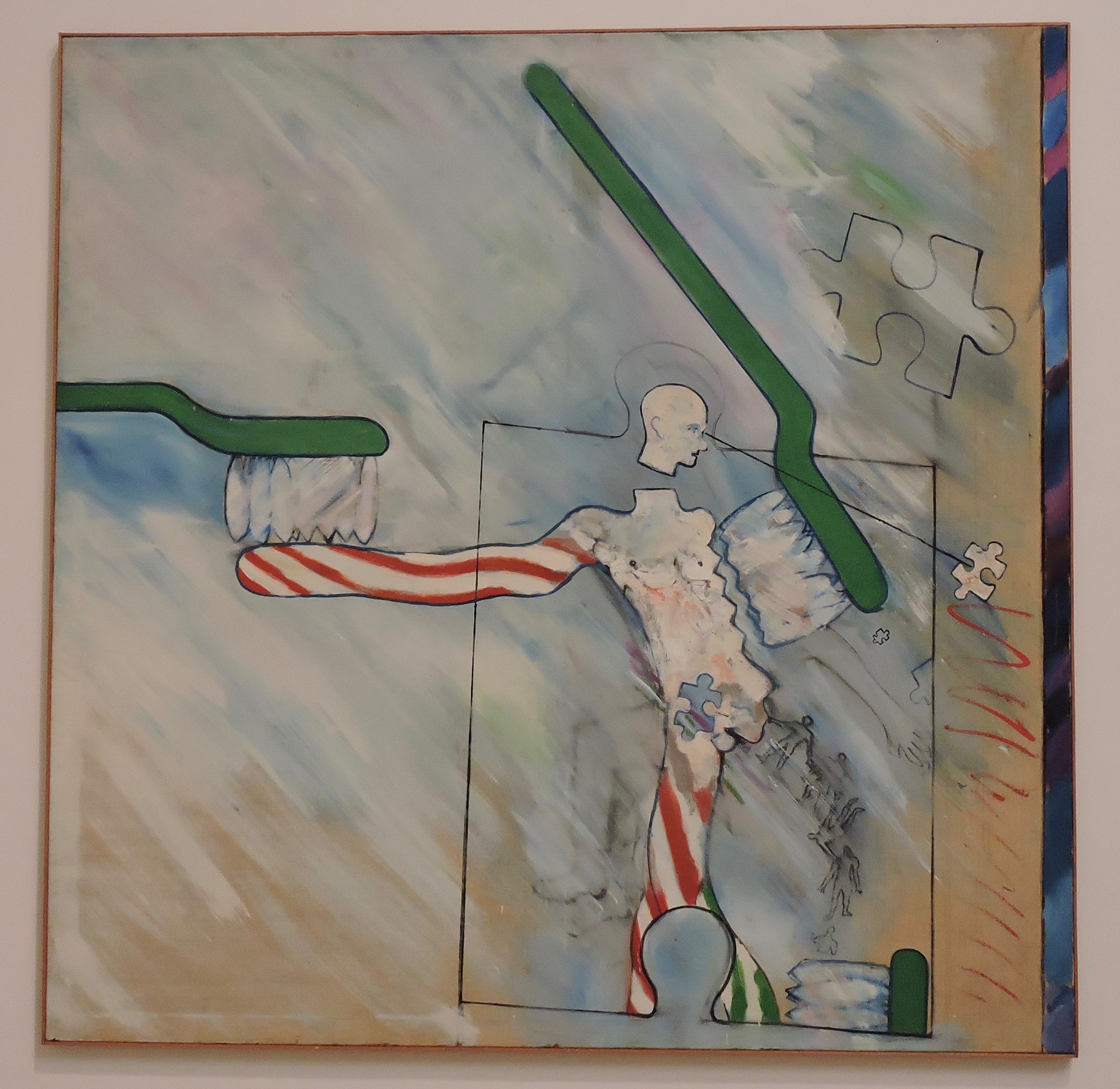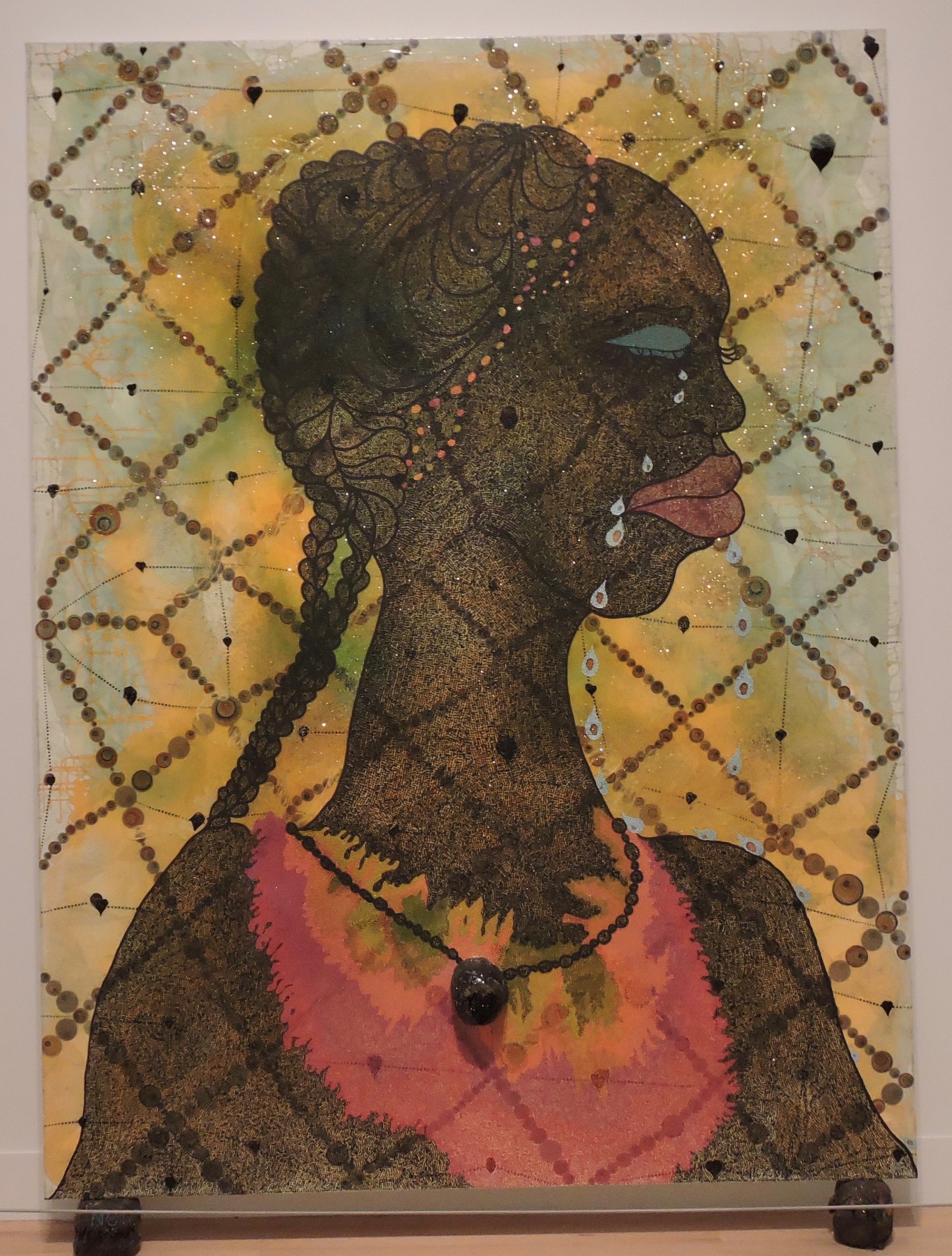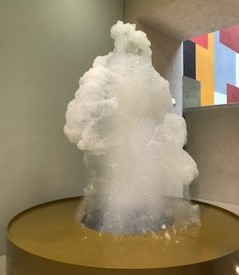Difference between revisions of "Tate Britain"
From Londonhua WIKI
| (43 intermediate revisions by 14 users not shown) | |||
| Line 21: | Line 21: | ||
<br> | <br> | ||
| − | =Background | + | =Background= |
<br> | <br> | ||
| − | + | Tate Britain contains British art produced from 1500 to the present. It was known as the National Gallery of British Art from 1897 to 1932, and the Tate Gallery from 1932 to 2000. The building is situated on the banks of the Thames, on the site of a former Millbank Penitentiary, which was demolished in 1890. The gallery first opened in 1897, and more than doubled in size during its first fifteen years. The gallery became fully independent of the National gallery in 1955 and has since expanded into several adjacent buildings. Tate Britain was the first of the Tate Galleries, which also include Tate Liverpool, Tate St. Ives, and Tate Modern<ref>History of Tate. (n.d.). Retrieved May 17, 2017, from http://www.tate.org.uk/about/who-we-are/history-of-tate</ref>. | |
<br><br> | <br><br> | ||
==Displays== | ==Displays== | ||
| Line 51: | Line 51: | ||
=== Cerith Wyn Evans === | === Cerith Wyn Evans === | ||
| − | + | {{Infobox | |
| − | {{Infobox | ||
|title = Cerith | |title = Cerith | ||
|bodystyle = width:20em | |bodystyle = width:20em | ||
| − | |image = [[File | + | |image = [[File Wyn.jpg|150px]] |
| − | |caption = | + | |caption = Gary Hume <br> |
| − | Gary Hume <br> | ||
Cerith 1998 <br> | Cerith 1998 <br> | ||
© Gary Hume <br> | © Gary Hume <br> | ||
| Line 64: | Line 62: | ||
<br> <br> | <br> <br> | ||
====Forms in Space…by Light (in Time) ==== | ====Forms in Space…by Light (in Time) ==== | ||
| + | [[File:FormsInSpace.jpg|300px|right|frameless]] | ||
<br> | <br> | ||
| − | + | Forms in Space…by Light (in Time) was created by Cerith Wyn Evans in 2017, in order to exemplify how energy can flow through empty space.The first thing you see when you enter the gallery, this exhibit takes up a large space in the center of the building. The project was created by suspending almost 2 km of custom designed neon lights from the ceiling to create abstract shapes in layers. As you move through the hall, the original view becomes deconstructed into individual hanging groups of lights. It provides viewers the feeling of suspension and movement. The idea was originally inspired by the movements of the Japanese Noh Theater and demonstrates the skill and art of creating light structures on levels that are considered challenging and almost impossible. | |
<br> <br> | <br> <br> | ||
| + | |||
| + | ===Do Words Have Voices=== | ||
| + | This is a spotlight exhibit by Martin Boyce on display in Tate Britain. Martin Boyce is an artist from Glasgow and likes to show the physical and psychological experience that happens in an environment. His installations have to do with modern urban landscape, specifically 20th century modernist design. He then shows the connection between this and what are utopian ways of living. In this display are six works, there are three "trees" with a canopy of metal leaves that were designed in 1925 by Joel and Jan Martel. There is a table that was based on a library desk which was done by designer Jean Prouve. There are also paper leaves that are scattered across the floor that are supposed to give the image as if they were blown through the modernist style ventilation grills. The lights in the room are slightly dimmed to give the same atmosphere as if you were in a park at desk. There is a feeling when you walk into the room that something just went on here. Boyce said he looks at, "the things we pass through every day and then occasionally catch a glimpse of and maybe see something that has meaningful resonance. The work is to amplify those moments." | ||
| + | |||
| + | <gallery mode="packed'> | ||
| + | File:EWdwhv1.jpg | ||
| + | File:EWdwhv3.jpg | ||
| + | File:EWdwhv4.jpg | ||
| + | </gallery> | ||
==Permanent Exhibits== | ==Permanent Exhibits== | ||
| Line 75: | Line 83: | ||
|bodystyle = width:25em | |bodystyle = width:25em | ||
|image = [[File:Deathofmajorpeirson.jpg|400px]] | |image = [[File:Deathofmajorpeirson.jpg|400px]] | ||
| − | | | + | |label2 = by |
| + | |data2 = John Singleton Copley | ||
}} | }} | ||
===John Singleton Copley=== | ===John Singleton Copley=== | ||
| Line 86: | Line 95: | ||
|bodystyle = width:20em | |bodystyle = width:20em | ||
|image = [[File:Turner_selfportrait.jpg|300px]] | |image = [[File:Turner_selfportrait.jpg|300px]] | ||
| − | | | + | |label2 = by |
| + | |data2 = Joseph Mallord William Turner | ||
}} | }} | ||
===Turner Collection=== | ===Turner Collection=== | ||
| − | Joseph Mallord William Turner (1775–1851) was a master of painting history, landscape and marine painting. His largest collection of art can be found at Tate Britain. He is know as the father of modern art since he was unlike artists at his time. | + | Joseph Mallord William Turner (1775–1851), according to the Tate website, was a master of painting history, landscape and marine painting.<ref name = "tut">T. (n.d.). Turner Collection at Tate Britain. Retrieved May 16, 2017, from http://www.tate.org.uk/visit/tate-britain/display/turner-collection </ref>His largest collection of art can be found at Tate Britain. He is know as the father of modern art since he was unlike artists at his time.<ref name = "tut"/> According to the Tate Britain website, he is is the most celebrated painter in England. <ref name = "tut"/> Pictured are some of his works that are displayed in Tate Britain. |
| + | <gallery> | ||
| + | File:shipwreak.jpeg|thumb|The Shipwreck exhibited 1805<br><small> '''Attributed to''' J. M. W. Turner [Public domain], via Wikimedia Commons <br> '''Link''' https://commons.wikimedia.org/wiki/File%3AJoseph_Mallord_William_Turner_-_The_Shipwreck_-_Google_Art_Project.jpg | ||
| + | File:Joseph_Mallord_William_Turner_-_Norham_Castle,_Sunrise_-_WGA23182.jpg|thumb|Norham Castle, Sunrise c.1845 <br><small> '''Attributed to''' J. M. W. Turner [Public domain], via Wikimedia Commons <br> '''Link''' https://commons.wikimedia.org/wiki/File%3AJoseph_Mallord_William_Turner_-_Norham_Castle%2C_Sunrise_-_WGA23182.jpg | ||
| + | File:JMW_Turner_-_Modern_Rome_-_Campo_Vacino.jpg|thumb|Modern Rome - Campo Vaccino exhibited 1839 <br><small> '''Attributed to''' J. M. W. Turner [Public domain], via Wikimedia Commons <br> '''Link''' https://commons.wikimedia.org/wiki/File%3AJMW_Turner_-_Modern_Rome_-_Campo_Vacino.jpg | ||
| + | </gallery> | ||
| + | |||
| + | ===Inspired by Literature=== | ||
| + | Many scenes painted we often the result of a certain artist inspired by a piece of literature that they had either heard or read. One example of this is "Claudio and Isabella" created by William Holman Hunt, this painting represents a scene from Shakespeare's Measure for Measure of complex moral dilemma for Claudio and Isabella after Claudio has been sentenced to death. Another painting, Psyche, done by George Fredric Watts is a representation of the myths of Venus, Cupid, and Jupiter and their trials of love and jealousy. There is another painting created in 1889 by John Singer Sargent that was made after he had seen the show, Macbeth, he was inspired by Ellen Terry's appearance and persuaded her to pose for a portrait. The final painting to be mentioned here is called The Lady of Shalott and was painted by John William Waterhouse in 1888. This scene concludes the famous poem of the same name, by having the heroine set sail for Camelot and possibly death. | ||
<gallery> | <gallery> | ||
| − | File: | + | File: Claudio and Isabella.jpg|thumb|Claudio and Isabella 1850 - Hunt |
| − | File: | + | File: Psyche.jpg|thumb|Psyche 1880 - Watts |
| − | File: | + | File: Ellen Terry as Lady Macbeth.jpg|thumb|Ellen Terry as Lady Macbeth 1889 - Sargent |
| + | File: The Lady of Shalott.jpg|thumb|The Lady of Shalott 1888 - Waterhouse | ||
</gallery> | </gallery> | ||
| Line 108: | Line 127: | ||
===William Blake=== | ===William Blake=== | ||
William Blake was an English poet, artist and print maker who was born and lived in London, England. Blake focuses most of his art on the creation and discovery which is exhibited in his eight works that are currently being displayed in the William Blake room on the upper level of the museum. The ''Oberon, Titania and Puck with Fairies Dancing'' focus on the last scene of William Shakespeare's ''A Midsummer Night's Dream'' where Titania is instructing her fairy train. ''Newton'' displays the scientist only looking at the scientific knowledge instead of the colourful rocks. representing creativity behind him. There is also ''The Ghost of a Flea'', ''Elohim Creating Adam'', ''The Good and Evil Angels'', ''Pity'', ''Nebuchadnezzar'', and ''Epitome of James Hervey's 'Meditstions among the Tombs'''. | William Blake was an English poet, artist and print maker who was born and lived in London, England. Blake focuses most of his art on the creation and discovery which is exhibited in his eight works that are currently being displayed in the William Blake room on the upper level of the museum. The ''Oberon, Titania and Puck with Fairies Dancing'' focus on the last scene of William Shakespeare's ''A Midsummer Night's Dream'' where Titania is instructing her fairy train. ''Newton'' displays the scientist only looking at the scientific knowledge instead of the colourful rocks. representing creativity behind him. There is also ''The Ghost of a Flea'', ''Elohim Creating Adam'', ''The Good and Evil Angels'', ''Pity'', ''Nebuchadnezzar'', and ''Epitome of James Hervey's 'Meditstions among the Tombs'''. | ||
| − | <gallery> | + | <gallery mode="packed"> |
| − | Image:Dance.jpg|''Oberon, Titania and Puck with Fairies Dancing'' | + | Image: Dance.jpg|''Oberon, Titania and Puck with Fairies Dancing'' |
| − | Image:Newton.jpg|''Newton'' | + | Image: Newton.jpg|''Newton'' |
| − | Image:Flea.jpg|''The Ghost of a Flea'' | + | Image: Flea.jpg|''The Ghost of a Flea'' |
| − | Image:Adam.jpg|''Elohim Creating Adam'' | + | Image: Adam.jpg|''Elohim Creating Adam'' |
| − | Image:Angels.jpg|''The Good and Evil Angels'' | + | Image: Angels.jpg|''The Good and Evil Angels'' |
| − | Image:Pity.jpg|''Pity'' | + | Image: Pity.jpg|''Pity'' |
| − | Image:Neb.jpg| ''Nebuchadnezzar'' | + | Image: Neb.jpg| ''Nebuchadnezzar'' |
| − | Image:Epitome.jpg|''Epitome of James Hervey's 'Meditstions among the Tombs''' | + | Image: Epitome.jpg|''Epitome of James Hervey's 'Meditstions among the Tombs''' |
</gallery> | </gallery> | ||
<br> | <br> | ||
| + | |||
==1850-1900== | ==1850-1900== | ||
===Paule Vézelay=== | ===Paule Vézelay=== | ||
| − | + | Paule Vézelay was born as Marjorie Watson-Williams in Bristol in 1892. She began studying at the London School of Art in 1912 under George Belcher. She moves to Paris and change her name to Paule Vézelay in 1926. While in Paris She joined a network of leading avant-garde artists and joined an association of of non- figurative artists called Abstraction-Création in 1934. She returned to England at the start of World War II. She stared doing textile design to help support herself because her modern style was unpopular. She continued to work as a artist until her death in 1984. | |
| + | |||
| + | ==1920s== | ||
| + | ===Sir Osbert Sitwell, Bt=== | ||
| + | The sculpture was made out of bronze by Frank Dobson in 1923. Frank Dobson was a scultptor and painter associated with the post-impressionist movement. He met Sir Osbert Sitwell in 1921 who sat for the sculpture for three months. During one of those sitting he met TE Lawrence who bought the sculpture and later gave it to the Tate. | ||
| + | <gallery mode="packed"> | ||
| + | Image: bust.JPG | ||
| + | </gallery> | ||
| + | <br><br> | ||
| + | |||
| + | ==1930== | ||
| + | The 1930's brought a wide range of artistic styles to Britain. They ranged from abstract to realist. The once optimistic artistic style of earlier works is now gone due to the beginning of World War Two; the horrors of conflict and the Holocaust. Also visible in the art is the modern artists' response to the rise of fascism in Europe. Abstract artists, surrealists, and social realists all uniquely expressed the political crisis. The art tells the stories of one last major event that happened during this time period: The Great Depression. Each artist found a way to incorporate aspects of the event into their art. Some were more obvious than others. The layout of this room I find to be unique. Instead of arranging the pieces by artistic style, they are arranged by year. This allows you to view the different kinds of art that was being created during the same time period and how the styles varied. It also allows the viewer to not be bombarded by one particular style. | ||
| + | <gallery mode="packed"> | ||
| + | 1718.jpg|Fulcrum (Top) and Surgical Ward (Bottom) | ||
| + | 1720.jpg|Related Forms | ||
| + | 1721.jpg|Sun God | ||
| + | 1722.jpg|Johanaan | ||
| + | 1723.jpg|Skipping | ||
| + | 1725.jpg|St. Francis and the Birds | ||
| + | 1726.jpg|Portrait of Margaret, Duchess of Argyll | ||
| + | 1727.jpg|The Potteries (Top) and Church at Trèboul (Bottom) | ||
| + | </gallery> | ||
| + | <br><br> | ||
| + | |||
| + | ==1940s== | ||
| + | ===Pelagos=== | ||
| + | This sculpture was created by Barbara Hepworth in 1946. It's base is carved out of oak wood. This sculpture was inspired by the view at the bay at St Ives in Cornwall. The rolling oak wood is supposed to resemble a wave with the taut strings to show the tension between her and the sea. | ||
| + | <gallery mode="packed"> | ||
| + | Image: strings.JPG | ||
| + | </gallery> | ||
| + | |||
| + | ==1950s== | ||
| + | As the world came out of World War II, art began to rise up again. The years of depression were over, and artists began coming back, painting and sculpting more art. One of the first images in the 1950s gallery is by Fred Williams, and its title is ''Coal Delivery'', which was painted in 1955. This is a relatively rare example of his early work which was made towards the end of his studies in London. It reflects the tradition of urban realism in British art. ''Coal Delivery'' replaces the monumentality of contemporary social realism with dynamism. Even though his stay in Britain was short, he would soon return to his homeland, Australia, where he became one of the leading artists of his time. <br> | ||
| + | The second image still reflects upon the urban realism of central London. The common man was coming back from war are picking up the jobs they once had, and Prunella Clough represented that perfectly with this next painting. In 1951, she painted ''Man Housing Metal Fish Boxes''. Clough's work hones in on this one man's task, which highlights the gritty realism of life of the working man in central London after the second great war. <br> | ||
| + | Focusing now on more a more interesting piece of artwork, Lynn Chadwick's ''Dragonfly''. ''Dragonfly'' is a kinetic sculpture that is hanging from the ceiling in the gallery room. It was created by a network of welded iron rods, It is held up by its side by only a few clear wires, indicating that it's off balance. It was carefully designed, however, so that the tail of the dragonfly would be a counterweight, making it so that the dragonfly is balanced on just a few strings. | ||
| + | <br> | ||
| + | <gallery> | ||
| + | File:IMG_0735.JPG|''Coal Delivery'' | ||
| + | File:IMG_0737.JPG|''Man Housing Metal Fish Boxes'' | ||
| + | File:IMG_0741.JPG|''Dragonfly'' | ||
| + | </gallery> | ||
| + | |||
| + | |||
| + | <br> | ||
| + | <br> | ||
| + | |||
| + | ==1960s== | ||
| + | The 1960s exhibit at Tate Britain captures the essence of Britain's art in the 60s. Figurative artists are featured along with their new and changing subjects, there was also new viewpoints on abstractionism beginning in the 1960s. New types of art, like pop art, had emerged in the 1950s and were being spread during the 60s. Another new type of art was conceptual art, where artist started using video and and performances to capture their art. The exhibit also features a range of artists, including older ones who adapted to the changing styles of 1960s art. A few of the pieces in the gallery are described below. | ||
| + | ===''Portrait of David Hockney in a Hollywood Spanish Interior''=== | ||
| + | This portrait done by Peter Blake was painted in 1950, well after David Hockney had become a famous British artist. The part of the painting of Hockney himself was taken from a photograph taken by Michael Cooper. The young man in the background of the photo was probably put there to hint at Hockney's sexuality. Blake is well known for his influence in Pop art but he also was known as a commercial artist. He often painted celebrity portraits like this one. Putting together pieces of this painting gives it a feel that it is a collage, which is very typical of Peter Blake's work. | ||
| + | ===''Relief Construction''=== | ||
| + | This work was completed between 1960-1962 and was done by an artist named Anthony Hill. Hill took part in the revival of idealist abstract art along with many other young artists in the 50s. This relief was created using mathematical formulas, making it very precise in unit proportions. The materials used, plastic and aluminum for the angle sections, were newly mass-produced materials further added to the precision of the design. This type of art is also known as British Constructivism. | ||
| + | <gallery> | ||
| + | relief 1.jpg|''Relief Construction in Black, White, and Maroon'' | ||
| + | David Hockney.jpg|''Portrait of David Hockney in a Hollywood Spanish Interior'' | ||
| + | Relief 2.jpg|''Relief Construction'' | ||
| + | mirror.jpg|''Mirror'' | ||
| + | kit man.jpg|''The Identi-Kit Man'' | ||
| + | no woman.jpg|''No Woman, No Cry'' | ||
| + | </gallery> | ||
==Video Art== | ==Video Art== | ||
Tate Britain offers three video art displays available to the public. "Together" by Lucy Beech and Edward Thomasson was designed to be therapeutic. The goal is to experience unspoken emotions and conflict in a safe environment. To do so, performers act out violent scenes in a dance to instrumental Katy Perry music. This creates an interesting contrast where the performers are smiling while pretending to beat each other up to cheery music. "Blue" by Derek Jarman is a blue screen accompanied by music and spoken words. It was inspired by artist Yves Klein whose blue paintings Jarman saw at Tate Gallery. For Jarman the blue represents "the admirable austerity of the void". "Dream English Kid" by Mark Leckey is a series of impressions. The video will focus on key familiar sounds and sights, often zooming in on them. Leckey was inspired by a YouTube video that made him realize how most of our memories can be found online. The video captures common sights and sounds from everyday life and dramatizes them. It seeks to connect viewers through common sensory experiences. | Tate Britain offers three video art displays available to the public. "Together" by Lucy Beech and Edward Thomasson was designed to be therapeutic. The goal is to experience unspoken emotions and conflict in a safe environment. To do so, performers act out violent scenes in a dance to instrumental Katy Perry music. This creates an interesting contrast where the performers are smiling while pretending to beat each other up to cheery music. "Blue" by Derek Jarman is a blue screen accompanied by music and spoken words. It was inspired by artist Yves Klein whose blue paintings Jarman saw at Tate Gallery. For Jarman the blue represents "the admirable austerity of the void". "Dream English Kid" by Mark Leckey is a series of impressions. The video will focus on key familiar sounds and sights, often zooming in on them. Leckey was inspired by a YouTube video that made him realize how most of our memories can be found online. The video captures common sights and sounds from everyday life and dramatizes them. It seeks to connect viewers through common sensory experiences. | ||
<br><br> | <br><br> | ||
| + | ==Auto Creative Art== | ||
| + | <br> | ||
| + | ===Cloud Canyons No. 3: An Ensemble of Bubble Machines=== | ||
| + | <br> | ||
| + | [[File:Bubble (2).jpg|thumb]]This is a ever changing sculpture where a central bubble machine creates a large morphing foam mass. It was created by David Medalla who drew inspiration from different foam formations from around the globe. He wanted a sculpture that would illustrate the tangible effect of invisible forces | ||
| + | |||
| + | <br><br><br><br><br><br><br><br><br> | ||
=References= | =References= | ||
Latest revision as of 13:08, 22 June 2017
Tate Britain
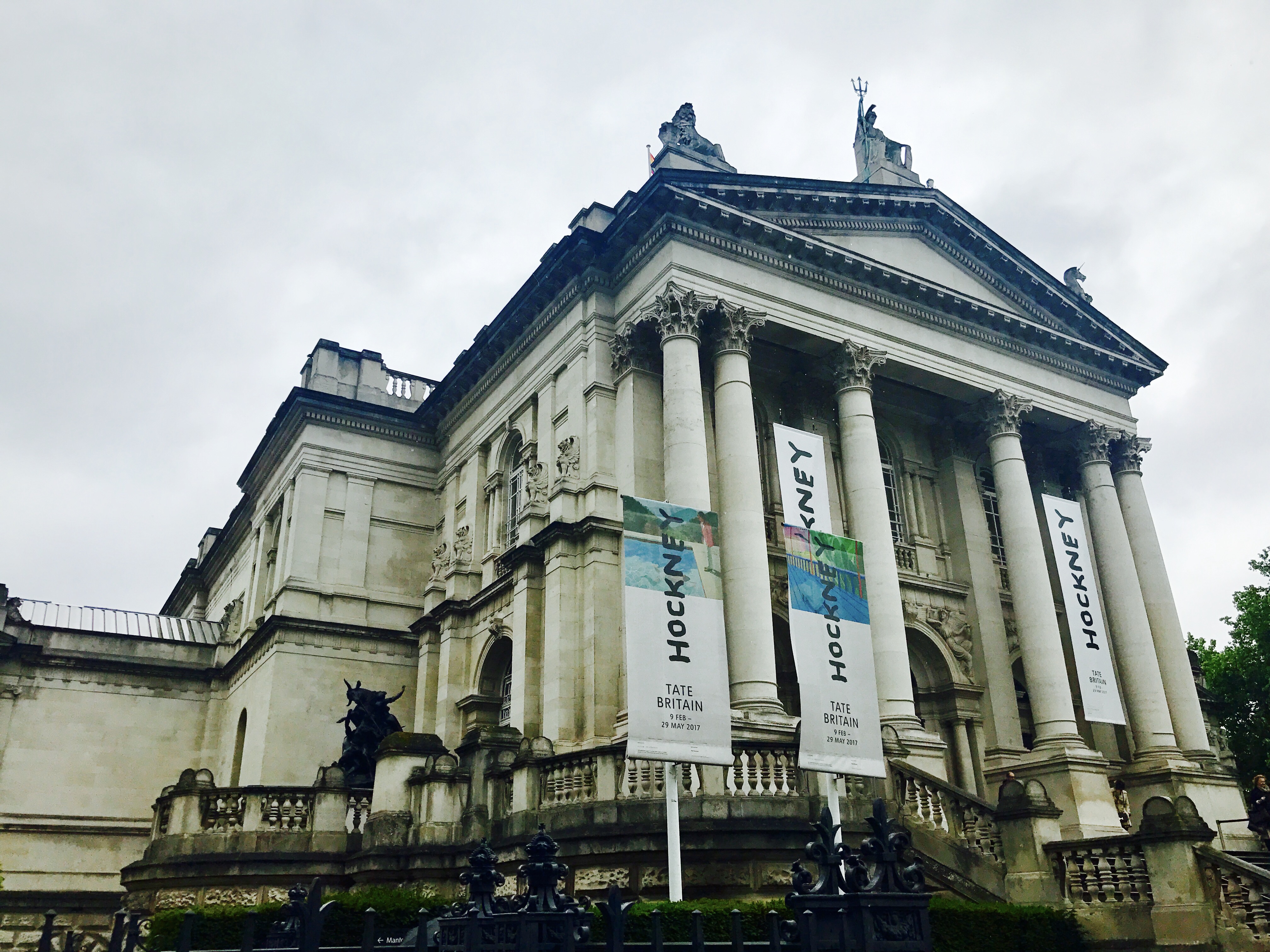 photo by: Sofia Reyes | |
| Director | Alex Farquharson |
|---|---|
| Established | 1897 |
| Location | Millbank, London SW1, UK |
Overview
Tate Britain is one of the four Tate Galleries. It was founded by Sir Henry Tate. It is the second best place to observed British Art, the first being the The National Gallery.
Contents
Background
Tate Britain contains British art produced from 1500 to the present. It was known as the National Gallery of British Art from 1897 to 1932, and the Tate Gallery from 1932 to 2000. The building is situated on the banks of the Thames, on the site of a former Millbank Penitentiary, which was demolished in 1890. The gallery first opened in 1897, and more than doubled in size during its first fifteen years. The gallery became fully independent of the National gallery in 1955 and has since expanded into several adjacent buildings. Tate Britain was the first of the Tate Galleries, which also include Tate Liverpool, Tate St. Ives, and Tate Modern[1].
Displays
The main display spaces show the permanent collection of historic British art, as well as contemporary work. However, they also host different exhibits.
Summer 2017 Exhibits
Queer British Art 1861–1967
Featuring works from 1861–1967 relating to lesbian, gay, bisexual, trans and queer (LGBTQ) identities, the show marks the 50th anniversary of the partial decriminalisation of male homosexuality in England. Queer British Art explores how artists expressed themselves in a time when established assumptions about gender and sexuality were being questioned and transformed.
Deeply personal and intimate works are presented alongside pieces aimed at a wider public, which helped to forge a sense of community when modern terminology of ‘lesbian’, ‘gay’, ‘bisexual’ and ‘trans’ were unrecognised. Together, they reveal a remarkable range of identities and stories, from the playful to the political and from the erotic to the domestic.
With paintings, drawings, personal photographs and film from artists such as John Singer Sargent, Dora Carrington, Duncan Grant and David Hockney the diversity of queer British art is celebrated as never before.
Organize each section of this article so that it has a logical flow. If you intend to discuss one aspect of the origin of a person, place, thing, or idea, identify the appropriate existing section of the article, or create that section if it doesn't exist. Then, make a clear subheading. If you notice that some other information is not organized clearly, rearrange the information, but do so cautiously and responsibly! The goal here is clarity for the reader.
David Hockney
"One of the most popular and influential British artists of the twentieth century returns to Tate Britain for his most comprehensive exhibition yet"[2] Mr. Hockney is a renown artist that in the last sixty years has had various accomplishments in painting, drawing, print, photography and video. With almost eighty years old, he brings to Tate Britain an exposition that, according to him, he had never shown to the public before. What makes his work so outstanding from other contemporary artists is his flexibility and ability to adapt to the use of new technologies and applications to create his art. He changes his style and ways of working to appeal to the different audiences and he expresses it freely "I live in the now", he says. "Time is elastic, and I play with that idea" he also said in a promotional video for this exposition in Tate Britain.
In this exposition, available until May 2017, he shows his portraits and images of Los Angeles swimming pools, through to his drawings and photography, Yorkshire landscapes and most recent paintings. This exhibition shows how the roots of each new direction lay in the work that came before. It is describe by Tate as a "once-in-a-lifetime chance to see these unforgettable works together".
Cerith Wyn Evans
|
150px Gary Hume Cerith 1998 |
The artist Cerith Wyn Evans is a Welsh painter born in 1958. His is noted for his unique and diverse range of artwork that ranged from sculpture, to film and art. He focused on the communication of ideas, which have been exemplified through most of his artwork. The fact that he designs in many different mediums allows his creativity to not be bounded by paint or video or sculpture. He is often known to do collaborations with well-known artists such as Yoko Ono. Wyn Evans has also been known to do many commissions such as the one currently at the Tate called Forms in Space…by Light (in Time).
Forms in Space…by Light (in Time)
Forms in Space…by Light (in Time) was created by Cerith Wyn Evans in 2017, in order to exemplify how energy can flow through empty space.The first thing you see when you enter the gallery, this exhibit takes up a large space in the center of the building. The project was created by suspending almost 2 km of custom designed neon lights from the ceiling to create abstract shapes in layers. As you move through the hall, the original view becomes deconstructed into individual hanging groups of lights. It provides viewers the feeling of suspension and movement. The idea was originally inspired by the movements of the Japanese Noh Theater and demonstrates the skill and art of creating light structures on levels that are considered challenging and almost impossible.
Do Words Have Voices
This is a spotlight exhibit by Martin Boyce on display in Tate Britain. Martin Boyce is an artist from Glasgow and likes to show the physical and psychological experience that happens in an environment. His installations have to do with modern urban landscape, specifically 20th century modernist design. He then shows the connection between this and what are utopian ways of living. In this display are six works, there are three "trees" with a canopy of metal leaves that were designed in 1925 by Joel and Jan Martel. There is a table that was based on a library desk which was done by designer Jean Prouve. There are also paper leaves that are scattered across the floor that are supposed to give the image as if they were blown through the modernist style ventilation grills. The lights in the room are slightly dimmed to give the same atmosphere as if you were in a park at desk. There is a feeling when you walk into the room that something just went on here. Boyce said he looks at, "the things we pass through every day and then occasionally catch a glimpse of and maybe see something that has meaningful resonance. The work is to amplify those moments."
Permanent Exhibits
1780s
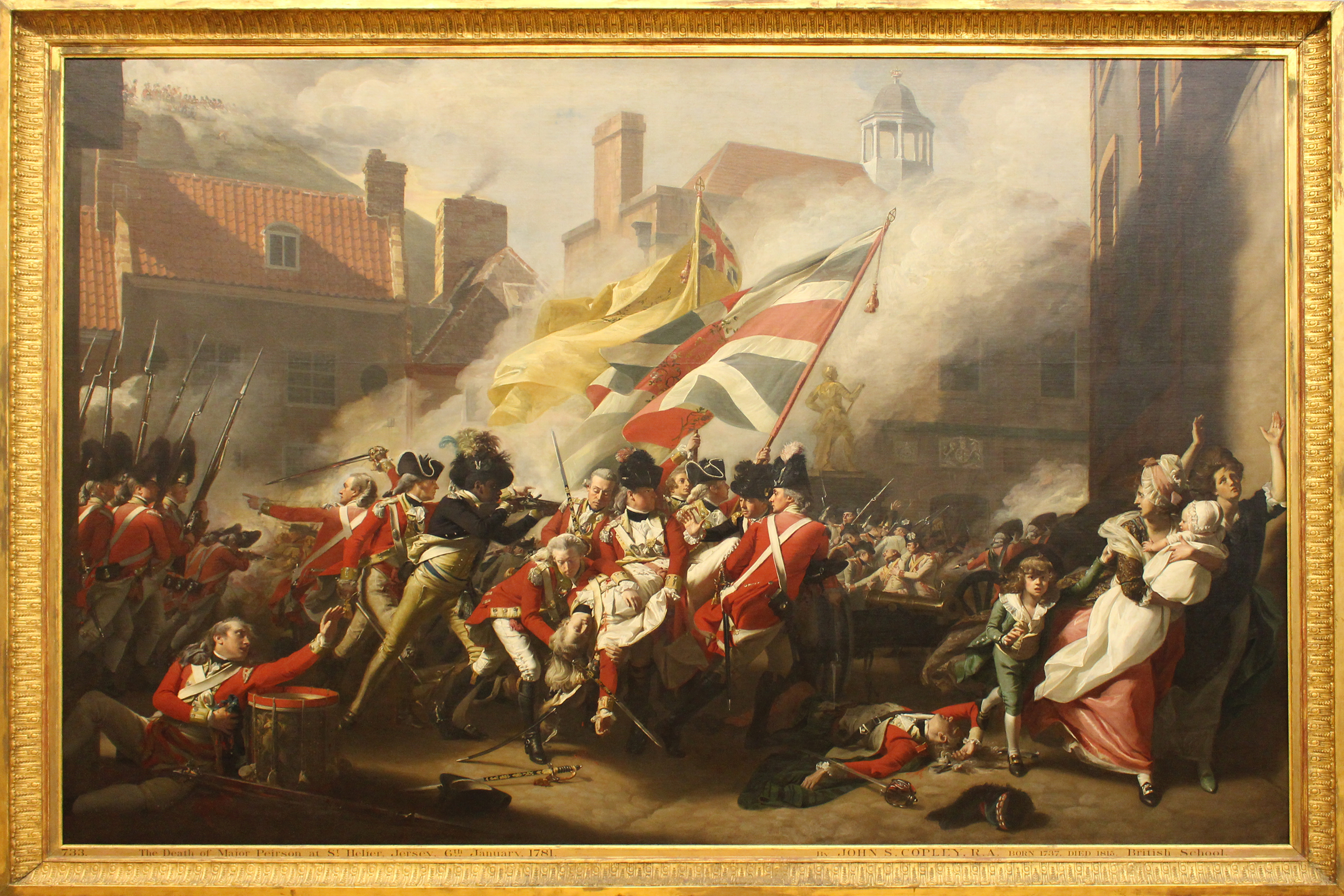 | |
| by | John Singleton Copley |
|---|---|
John Singleton Copley
This piece was painted by John Singleton Copley. It shows the Battle of Jersey, where, in 1781, a French force invaded the island in an attempt to take it from the British. After the fall of the island’s capital, the governor was captured and agreed to a surrender to the French. However, the young Major Peirson fought off the French, and as the British were winning, he was shot by a French sniper. As shown in the painting, Peirson’s black servant avenged his master by killing the sniper. This painting shows Peirson dying in the battle, but in reality he died before the battle. This battle turned Peirson into a British hero, and therefore the painting was extremely popular when it was released.
1800s
 | |
| by | Joseph Mallord William Turner |
|---|---|
Turner Collection
Joseph Mallord William Turner (1775–1851), according to the Tate website, was a master of painting history, landscape and marine painting.[3]His largest collection of art can be found at Tate Britain. He is know as the father of modern art since he was unlike artists at his time.[3] According to the Tate Britain website, he is is the most celebrated painter in England. [3] Pictured are some of his works that are displayed in Tate Britain.
The Shipwreck exhibited 1805
Attributed to J. M. W. Turner [Public domain], via Wikimedia Commons
Link https://commons.wikimedia.org/wiki/File%3AJoseph_Mallord_William_Turner_-_The_Shipwreck_-_Google_Art_Project.jpgNorham Castle, Sunrise c.1845
Attributed to J. M. W. Turner [Public domain], via Wikimedia Commons
Link https://commons.wikimedia.org/wiki/File%3AJoseph_Mallord_William_Turner_-_Norham_Castle%2C_Sunrise_-_WGA23182.jpgModern Rome - Campo Vaccino exhibited 1839
Attributed to J. M. W. Turner [Public domain], via Wikimedia Commons
Link https://commons.wikimedia.org/wiki/File%3AJMW_Turner_-_Modern_Rome_-_Campo_Vacino.jpg
Inspired by Literature
Many scenes painted we often the result of a certain artist inspired by a piece of literature that they had either heard or read. One example of this is "Claudio and Isabella" created by William Holman Hunt, this painting represents a scene from Shakespeare's Measure for Measure of complex moral dilemma for Claudio and Isabella after Claudio has been sentenced to death. Another painting, Psyche, done by George Fredric Watts is a representation of the myths of Venus, Cupid, and Jupiter and their trials of love and jealousy. There is another painting created in 1889 by John Singer Sargent that was made after he had seen the show, Macbeth, he was inspired by Ellen Terry's appearance and persuaded her to pose for a portrait. The final painting to be mentioned here is called The Lady of Shalott and was painted by John William Waterhouse in 1888. This scene concludes the famous poem of the same name, by having the heroine set sail for Camelot and possibly death.
1850's
William Holman Hunt
William Holman Hunt was the founder of the Pre-Raphaelite Brotherhood, a group dedicated to creating quality ans sympathetic art, the expression of genuine ideas, and the study of nature, Hunt created his art following these principles. Currently on display in the 1850's room are four of his pieces Our English Coasts, 1852 ('Strayed Sheep'), Cornfield at Ewell, The Awakening Conscience, and Claudio and Isabella. The first two pieces are landscapes of the English countryside following one of the Brotherhood's main principles about painting and studying nature. The later two pieces are portraits that have two differing messages, but similar themes. In The Awakening Conscience, a man is portrayed with his mistress and evokes symbolism of innocence lost and plight of women. In his other portrait, Claudio and Isabella, Isabella stands in white as a symbol of purity where as Claudio stands in the dark as a foil to Isabella.
William Blake
William Blake was an English poet, artist and print maker who was born and lived in London, England. Blake focuses most of his art on the creation and discovery which is exhibited in his eight works that are currently being displayed in the William Blake room on the upper level of the museum. The Oberon, Titania and Puck with Fairies Dancing focus on the last scene of William Shakespeare's A Midsummer Night's Dream where Titania is instructing her fairy train. Newton displays the scientist only looking at the scientific knowledge instead of the colourful rocks. representing creativity behind him. There is also The Ghost of a Flea, Elohim Creating Adam, The Good and Evil Angels, Pity, Nebuchadnezzar, and Epitome of James Hervey's 'Meditstions among the Tombs'.
1850-1900
Paule Vézelay
Paule Vézelay was born as Marjorie Watson-Williams in Bristol in 1892. She began studying at the London School of Art in 1912 under George Belcher. She moves to Paris and change her name to Paule Vézelay in 1926. While in Paris She joined a network of leading avant-garde artists and joined an association of of non- figurative artists called Abstraction-Création in 1934. She returned to England at the start of World War II. She stared doing textile design to help support herself because her modern style was unpopular. She continued to work as a artist until her death in 1984.
1920s
Sir Osbert Sitwell, Bt
The sculpture was made out of bronze by Frank Dobson in 1923. Frank Dobson was a scultptor and painter associated with the post-impressionist movement. He met Sir Osbert Sitwell in 1921 who sat for the sculpture for three months. During one of those sitting he met TE Lawrence who bought the sculpture and later gave it to the Tate.
1930
The 1930's brought a wide range of artistic styles to Britain. They ranged from abstract to realist. The once optimistic artistic style of earlier works is now gone due to the beginning of World War Two; the horrors of conflict and the Holocaust. Also visible in the art is the modern artists' response to the rise of fascism in Europe. Abstract artists, surrealists, and social realists all uniquely expressed the political crisis. The art tells the stories of one last major event that happened during this time period: The Great Depression. Each artist found a way to incorporate aspects of the event into their art. Some were more obvious than others. The layout of this room I find to be unique. Instead of arranging the pieces by artistic style, they are arranged by year. This allows you to view the different kinds of art that was being created during the same time period and how the styles varied. It also allows the viewer to not be bombarded by one particular style.
1940s
Pelagos
This sculpture was created by Barbara Hepworth in 1946. It's base is carved out of oak wood. This sculpture was inspired by the view at the bay at St Ives in Cornwall. The rolling oak wood is supposed to resemble a wave with the taut strings to show the tension between her and the sea.
1950s
As the world came out of World War II, art began to rise up again. The years of depression were over, and artists began coming back, painting and sculpting more art. One of the first images in the 1950s gallery is by Fred Williams, and its title is Coal Delivery, which was painted in 1955. This is a relatively rare example of his early work which was made towards the end of his studies in London. It reflects the tradition of urban realism in British art. Coal Delivery replaces the monumentality of contemporary social realism with dynamism. Even though his stay in Britain was short, he would soon return to his homeland, Australia, where he became one of the leading artists of his time.
The second image still reflects upon the urban realism of central London. The common man was coming back from war are picking up the jobs they once had, and Prunella Clough represented that perfectly with this next painting. In 1951, she painted Man Housing Metal Fish Boxes. Clough's work hones in on this one man's task, which highlights the gritty realism of life of the working man in central London after the second great war.
Focusing now on more a more interesting piece of artwork, Lynn Chadwick's Dragonfly. Dragonfly is a kinetic sculpture that is hanging from the ceiling in the gallery room. It was created by a network of welded iron rods, It is held up by its side by only a few clear wires, indicating that it's off balance. It was carefully designed, however, so that the tail of the dragonfly would be a counterweight, making it so that the dragonfly is balanced on just a few strings.
1960s
The 1960s exhibit at Tate Britain captures the essence of Britain's art in the 60s. Figurative artists are featured along with their new and changing subjects, there was also new viewpoints on abstractionism beginning in the 1960s. New types of art, like pop art, had emerged in the 1950s and were being spread during the 60s. Another new type of art was conceptual art, where artist started using video and and performances to capture their art. The exhibit also features a range of artists, including older ones who adapted to the changing styles of 1960s art. A few of the pieces in the gallery are described below.
Portrait of David Hockney in a Hollywood Spanish Interior
This portrait done by Peter Blake was painted in 1950, well after David Hockney had become a famous British artist. The part of the painting of Hockney himself was taken from a photograph taken by Michael Cooper. The young man in the background of the photo was probably put there to hint at Hockney's sexuality. Blake is well known for his influence in Pop art but he also was known as a commercial artist. He often painted celebrity portraits like this one. Putting together pieces of this painting gives it a feel that it is a collage, which is very typical of Peter Blake's work.
Relief Construction
This work was completed between 1960-1962 and was done by an artist named Anthony Hill. Hill took part in the revival of idealist abstract art along with many other young artists in the 50s. This relief was created using mathematical formulas, making it very precise in unit proportions. The materials used, plastic and aluminum for the angle sections, were newly mass-produced materials further added to the precision of the design. This type of art is also known as British Constructivism.
Video Art
Tate Britain offers three video art displays available to the public. "Together" by Lucy Beech and Edward Thomasson was designed to be therapeutic. The goal is to experience unspoken emotions and conflict in a safe environment. To do so, performers act out violent scenes in a dance to instrumental Katy Perry music. This creates an interesting contrast where the performers are smiling while pretending to beat each other up to cheery music. "Blue" by Derek Jarman is a blue screen accompanied by music and spoken words. It was inspired by artist Yves Klein whose blue paintings Jarman saw at Tate Gallery. For Jarman the blue represents "the admirable austerity of the void". "Dream English Kid" by Mark Leckey is a series of impressions. The video will focus on key familiar sounds and sights, often zooming in on them. Leckey was inspired by a YouTube video that made him realize how most of our memories can be found online. The video captures common sights and sounds from everyday life and dramatizes them. It seeks to connect viewers through common sensory experiences.
Auto Creative Art
Cloud Canyons No. 3: An Ensemble of Bubble Machines
This is a ever changing sculpture where a central bubble machine creates a large morphing foam mass. It was created by David Medalla who drew inspiration from different foam formations from around the globe. He wanted a sculpture that would illustrate the tangible effect of invisible forces
References
- ↑ History of Tate. (n.d.). Retrieved May 17, 2017, from http://www.tate.org.uk/about/who-we-are/history-of-tate
- ↑ T. (n.d.). David Hockney - Exhibition at Tate Britain. Retrieved May 16, 2017, from http://www.tate.org.uk/whats-on/tate-britain/exhibition/david-hockney
- ↑ 3.0 3.1 3.2 T. (n.d.). Turner Collection at Tate Britain. Retrieved May 16, 2017, from http://www.tate.org.uk/visit/tate-britain/display/turner-collection
External Links
If appropriate, add an external links section
Image Gallery
If appropriate, add an image gallery
